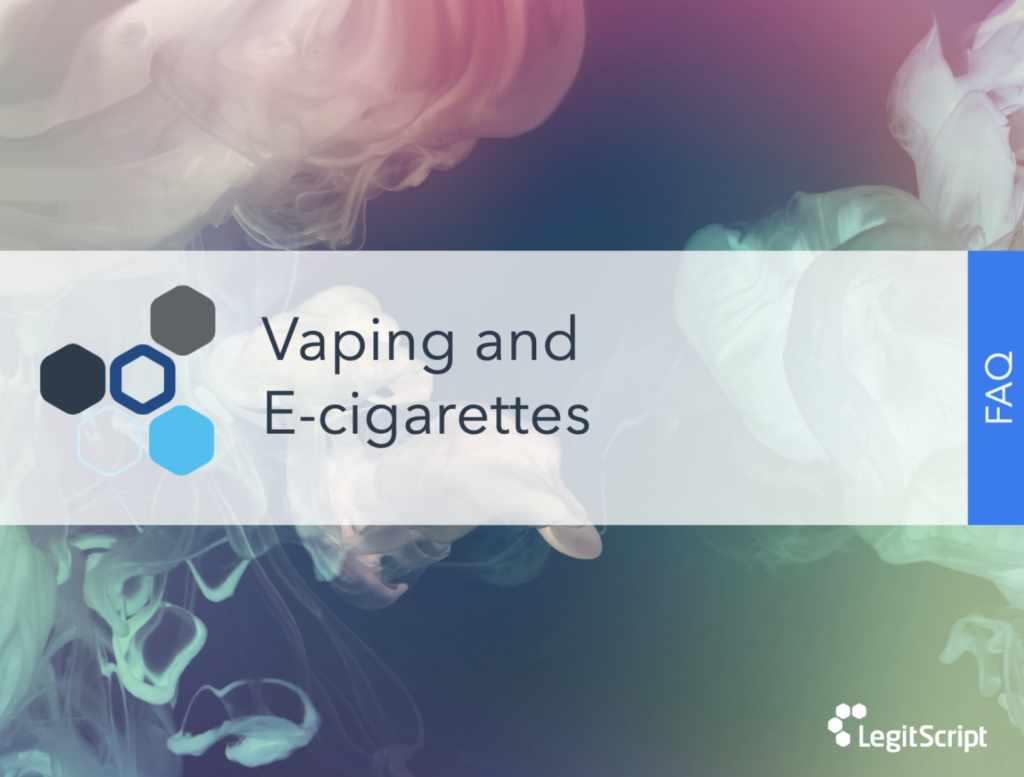Recently, the Federal Trade Commission (FTC) issued its second report on e-cigarette sales and advertising nationwide, and the findings are dramatic. According to the report, use of flavored vapes surged in 2020, when data was collected. It was also at this same time that the Food and Drug Administration (FDA) enacted a federal ban on the sale of flavored cartridges that are popular with young smokers. So what happened?
The FTC’s report indicates that, rather than declining, youth e-cigarette use has simply shifted. Manufacturers and users appear to be circumventing a rule meant to discourage youth vaping. The result is that a preponderance of flavored vaping products are still available for sale online and in stores.
FDA’s Enforcement of Flavored Vapes, Cartridge-based E-Cigarettes
In early 2020, FDA clarified its enforcement policies on e-cigarettes and stated an intention to focus on flavored, cartridge-based electronic nicotine delivery systems (ENDS), largely because of their appeal to youth. Companies that continued to sell flavored cartridge-based products (aside from tobacco and menthol flavors) could face prosecution for failing to procure premarket authorization. Juul, the largest e-cigarette manufacturer at the time, had already stopped selling flavors other than tobacco, menthol, and mint in retail locations and online.
The policy, however, made an exemption for disposable products when it defined what qualified as a cartridge. A footnote on page 9 of the policy states that “[a]n example of products that would not be captured by this definition include completely self-contained, disposable products.” That kept the door open for brands with disposable devices — such as Puff Bar, Posh, Stig, and blu — to continue selling a variety of flavored nicotine products.
The Disposable E-cigarette and Flavored Vape Landscape
According to research by Reuters, flavored disposable vaping devices now account for one-third of e-cigarette sales in the US, up from less than 2% three years ago. Over the past year, sales of disposable e-cigarettes surpassed $2 billion, which is greater than Juul’s once-dominant market share. Reuters acquired this data from a Chicago market research firm, IRI, which employs scanner data and other information to track retail purchases.
Although the FTC’s research found no increase in the sales of disposables, the report notes that their data is likely inaccurate because only two of the five companies that submitted data for the years surveyed were marketing disposable e-cigarettes. The FTC said it recently sent orders to four other e-cigarette companies to gain a more accurate picture of the landscape.
Non-tobacco Nicotine
Another method some manufacturers had been using to circumvent FDA regulation is to use synthetically created nicotine, which some manufacturers claimed exempted these products from FDA’s tobacco enforcement policies. In April 2022, however, FDA clarified its authority to regulate tobacco products containing nicotine from any source, including synthetic nicotine. In addition to adhering to all applicable requirements under the Federal Food, Drug, and Cosmetic Act, companies engaged in the manufacture or sale of non-tobacco nicotine are required to register with the FDA and list all these tobacco products.
A Problem With Discounted E-cigarettes
In addition to flavored vape products, the FTC report highlights another concern: record-high discounting of e-cigarettes. According to the report, discounted ENDS products reached record highs in 2019 and 2020, and spending on the sampling and distribution of nearly free ENDS products effectively doubled in just two years. Although the FDA banned completely free tobacco samples in 2016 to limit youth access, some companies have offered e-cigarettes for a nominal price, such as one dollar or less, as a way to circumvent the ban.
Want to Learn More?
LegitScript tracks regulatory trends related to the sale of e-cigarettes and closely monitors the commercial internet for merchants engaged in problematic sales of these devices.
Want to learn more about vaping and ENDS products? Download our Vaping and E-cigarettes FAQ today.






